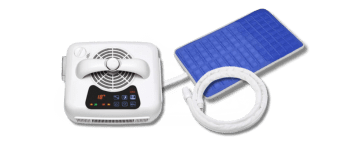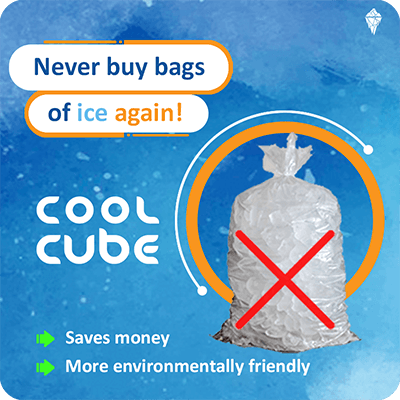
Powerful Coolers
No more ice needed
Easy installment
Any bath/tub/pool will work
Exploring the Benefits of Cold Therapy for ALS Patients
January 19, 2024
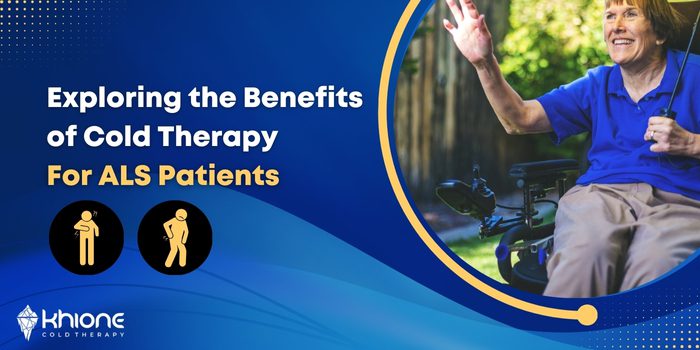

Introduction
Amyotrophic Lateral Sclerosis (ALS), also known as Lou Gehrig’s disease, is a progressive neurodegenerative disorder that affects nerve cells in the brain and spinal cord. This debilitating condition leads to muscle weakness, paralysis, and ultimately, respiratory failure. However, emerging therapies and lifestyle interventions offer hope in managing ALS symptoms. Among these is cold therapy, including cold exposure and ice bathing, which has been gaining attention for its potential benefits in neurodegenerative diseases.
Understanding Cold Therapy
Cold therapy encompasses various techniques like cold exposure, ice baths, and cryotherapy. It involves exposing the body to extremely cold temperatures for short periods. This exposure triggers a physiological response that includes improved circulation and reduced inflammation. For individuals with neurological conditions, these effects could be particularly beneficial.
Cold Therapy in Neurodegenerative Diseases
Research into cold therapy for neurodegenerative diseases is still in its infancy. However, the anti-inflammatory and neuroprotective effects observed in some studies are promising. These effects might stem from the body’s response to cold, which includes the release of anti-inflammatory cytokines and reduction in oxidative stress.
Potential Benefits for ALS Patients
For ALS patients, the potential benefits of cold therapy are particularly intriguing. By reducing inflammation, which plays a significant role in ALS progression, cold therapy might offer a way to slow down the disease’s advancement. Additionally, it might aid in reducing muscle spasticity and improving the overall quality of life for ALS patients. However, it’s important to note that these benefits are largely speculative at this point, with more research needed to understand the full impact.
Risks and Considerations
While cold therapy might offer benefits, it’s not without risks, especially for ALS patients. The stress of cold exposure can pose cardiovascular risks, and in some cases, might exacerbate certain symptoms. It’s crucial for ALS patients to consult with their healthcare providers before starting any form of cold therapy.
Patient Testimonials and Experiences
Anecdotal evidence and personal stories from ALS patients who have tried cold therapy can offer insights into its potential effects. Some patients report improved mood and mobility, while others note no significant changes. These personal experiences, while not scientific evidence, can provide valuable perspectives.
Integrating Cold Therapy into ALS Care
For ALS patients interested in trying cold therapy, it’s important to approach it cautiously. Starting slowly, monitoring the body’s responses, and ensuring a safe environment are key. Additionally, cold therapy should be seen as a complementary approach, used in conjunction with other ALS treatments and care strategies.
Conclusion
Cold therapy presents an intriguing possibility for ALS patients, offering potential benefits like reduced inflammation and improved quality of life. However, its effectiveness and safety need further research. As with any new therapy, it’s essential for patients to discuss with their healthcare providers and consider all risks and benefits.
Why Starting Ice Bathing During the Colder Months is a Wise Choice
November 28, 2023
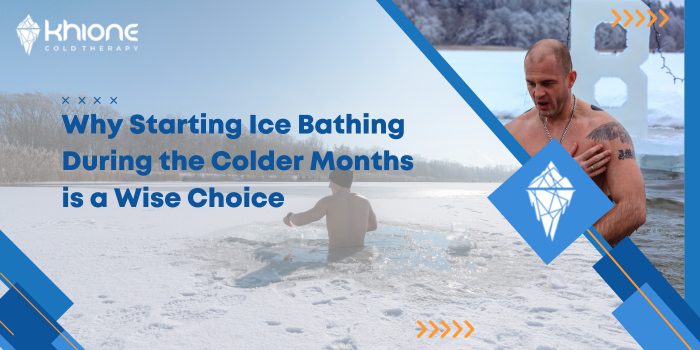

As the temperature drops and we wrap ourselves in warm layers, the idea of plunging into an ice bath might seem counterintuitive, if not outright daunting. However, starting your ice bathing journey during the colder months of the year can be an incredibly wise decision for several reasons.
1. Gradual Acclimatization
Starting ice bathing in colder months allows your body to gradually acclimate to the lower temperatures. This slow adaptation process can be more effective and less shocking than beginning in warmer months. When you start in the winter, your body is already somewhat used to the cold outside, making the transition to ice bathing smoother and more natural.
2. Boosting Immune System
Research suggests that regular exposure to cold water can strengthen the immune system. By beginning in the winter, you’re preparing your body to better fight off colds and flu, which are more prevalent during these months. The cold water triggers an immune response, increasing the number of white blood cells and enhancing your overall immunity.
3. Improved Mental Resilience
There’s also a mental aspect to consider. Starting ice bathing when it’s already cold outside requires a certain level of mental toughness. This challenge can significantly improve your mental resilience and determination. It’s a way of pushing your boundaries and expanding your comfort zone, which can have positive effects on other areas of your life as well.
4. Better Circulation and Metabolic Rate
Cold exposure is known to improve blood circulation, as the body works harder to maintain its core temperature. This can lead to a higher metabolic rate, which is beneficial for maintaining a healthy weight. During winter, our metabolism tends to slow down due to reduced physical activity and increased calorie intake, so ice bathing can counteract these effects.
5. Therapeutic Benefits
The colder months can often lead to feelings of lethargy and seasonal affective disorder (SAD). Ice bathing stimulates the production of endorphins, the body’s natural mood lifters, helping to combat these feelings. The rush of endorphins can lead to a sense of euphoria and well-being, which is especially valuable during the shorter, darker days of winter.
6. Better Sleep Quality
Many people find that cold exposure helps improve their sleep quality. As winter nights are longer, it’s an ideal time to capitalize on this benefit. A regular ice bathing routine can help regulate your body’s natural sleep rhythms, leading to deeper and more restful sleep.
Conclusion
Starting ice bathing during the colder months might seem daunting, but it offers numerous physical and mental health benefits. It’s a practice that not only challenges your body in a healthy way but also builds mental fortitude and resilience. As with any new health regimen, it’s important to start slowly and listen to your body. Consult with a healthcare professional if you have any health concerns, and most importantly, embrace the journey of discovering the many benefits that ice bathing can offer during the winter months.
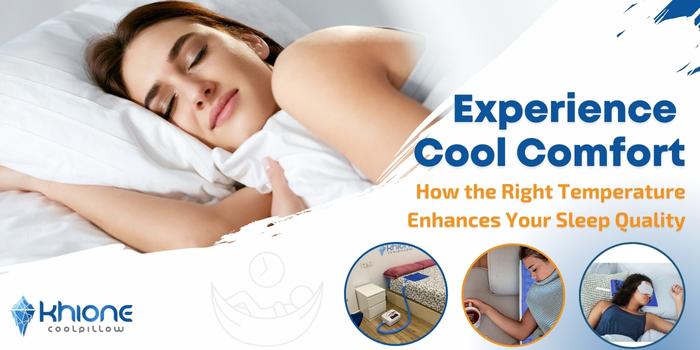

Introduction:
Welcome to the world of rejuvenating sleep! Quality slumber is the cornerstone of good health, and yet, it eludes many. The CoolPillow Cooled Pillow Pad offers a revolutionary approach to achieving the perfect sleep temperature. Let’s delve into how this innovative product promises to transform your nights and, consequently, your days.
Understanding Sleep Cycles and Temperature
Sleep is a rhythmic dance of cycles, and body temperature is a leading partner. As we progress through various stages of sleep, our internal thermostat also takes a dive. However, when our pillows and beds retain heat, they can disrupt this natural ebb and flow. The CoolPillow Cooled Pillow Pad is designed to harmonize with your body’s nocturnal rhythms, ensuring that your sleep is not just uninterrupted, but also deeply restorative.
The Science of Sleep and Temperature
Studies suggest that the sweet spot for ambient sleeping temperature is between 15.6 to 19.4 degrees Celsius (60 to 67 degrees Fahrenheit)Stray from this range, and your sleep could fragment, leaving you feeling unrested. The CoolPillow’s advanced cooling technology aids in maintaining this optimal zone, enabling you to drift into a deeper sleep with ease.
Benefits of a Cool Sleep Environment
Embracing a cooler sleep environment can be transformative. It’s associated with everything from a boost in metabolism to enhanced mood and sharper mental acuity. Users of the CoolPillow report not just better sleep, but an overall enhancement in their well-being.
Introducing the CoolPillow Cooled Pillow Pad
The CoolPillow isn’t just another pillow pad; it’s a sleep sanctuary. With its cutting-edge fabric and cooling gel technology, it disperses heat away from your head, ensuring that you remain cool throughout the night. Its design seamlessly integrates with your existing pillow, making it an effortless addition to your bedtime
How to Integrate the CoolPillow into Your Sleep Routine
For the best experience, place the CoolPillow Cooled Pillow Pad directly on top of your pillow under your pillowcase. Ensure your bedroom temperature complements the pad’s cooling effects for an optimal sleep environment. And don’t forget to maintain a regular sleep schedule and limit screen time before bed to enhance CoolPillow’s benefits.
Conclusion:
In the quest for perfect sleep, temperature is non-negotiable. With the CoolPillow Cooled Pillow Pad, you’re not just purchasing a product; you’re investing in a lifestyle change. Try it tonight, and transform the way you sleep, one cool breath at a time.
Cold Immersion: The Transformative Biohack You Never Knew You Needed
October 17, 2023
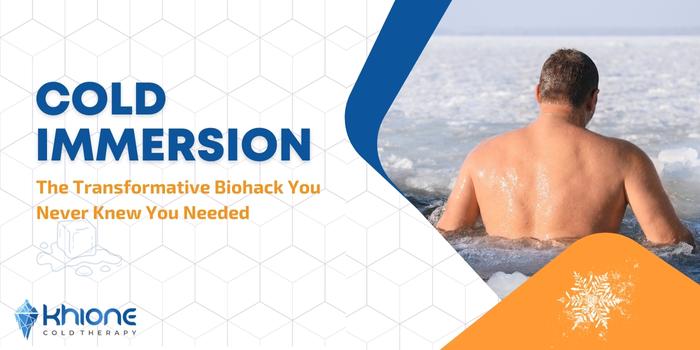

Biohacking, in its essence, is about optimizing human performance, health, and well-being by leveraging science, technology, and a deep understanding of human physiology. Among the plethora of methods biohackers use to achieve this, cold immersion—particularly through ice baths—has emerged as a favourite, rooted in ancient practices and now backed by modern science. This article dives deep into the transformative world of cold immersion and its role in pushing the boundaries of what our bodies can achieve.
The Origins of Cold Immersion
Though the term “biohacking” feels ultra-modern, humans have been tinkering with body optimization for centuries. Ancient cultures from the Vikings to the Japanese have used cold water immersion as a ritual for cleansing, rejuvenation, and endurance training. Today, with advanced technology such as ice bath chilling machines, the practice has evolved, but the principle remains: subjecting the body to cold can lead to a myriad of benefits.
How Does Cold Immersion Work?
- When the body is submerged in icy water, it goes into a mild state of shock. This immediate drop in temperature activates a host of physiological responses:
- Vasoconstriction: Blood vessels constrict, directing blood flow away from peripheral tissues and towards core organs.
- Boost in Circulation: Once out of the cold, the body undergoes vasodilation, causing a rush of nutrient-rich blood to muscles and skin.
- Metabolic Enhancement: Cold immersion can activate brown adipose tissue (BAT), a type of fat that burns energy to generate heat.
Beyond the Physical: Mind and Spirit
The Wim Hof Method, which combines specific breathing techniques with cold exposure, demonstrates the mind-body connection inherent in cold immersion. Practitioners report heightened mental clarity, improved mood, and a deeper connection to their internal experiences.
The Biohacker’s Approach
For the biohacker, cold immersion isn’t just about the immediate response. It’s about integrating this practice into a holistic approach to health:
-
- Routine: Consistency is key. Integrating regular cold baths into one’s routine can lead to cumulative benefits.
- Measurement: Track physiological markers such as heart rate, recovery times, and even mood shifts to fine-tune the practice.
- Integration: Combine cold immersion with other biohacking tools like fasting, specific diets, or neurofeedback for synergistic effects.
Optimizing the Experience with Technology
Today’s ice bath chilling machines are a game-changer. They allow for precise temperature control, ensuring that the cold immersion experience is both safe and optimized for the desired outcome. Whether you’re looking to enhance muscle recovery, improve mental acuity, or simply challenge your body’s limits, these machines provide a consistent and efficient method to do so.
In Conclusion
Cold immersion, as a biohacking tool, offers a unique intersection of ancient wisdom and modern science. As we continue to explore the limits of human physiology, practices like this remind us of the incredible adaptability and resilience inherent in our bodies. Whether you’re a seasoned biohacker or just starting on your optimization journey, consider the power of the cold—it might just be the transformative experience you’re seeking.
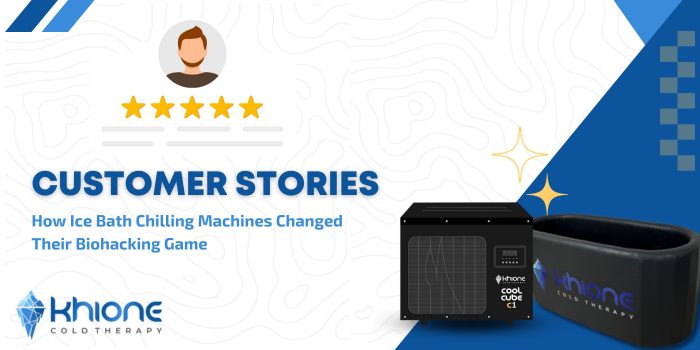

In today’s world, where biohacking and optimizing human performance are gaining traction, the benefits of cold therapy are becoming widely recognized. But it’s not just about the data and the science – real-life stories offer powerful insights into how technologies, like ice bath chilling machines, are making a tangible difference in people’s lives. Let’s dive into some transformative tales from customers who have embraced the chill.
1. The Marathon Runner: Eva’s Recovery Miracle
Eva, a dedicated marathon runner, often found herself battling inflammation and muscle soreness after her intense training sessions. After trying various recovery methods, she invested in an ice bath chilling machine. The precise temperature control allowed her to optimize her recovery sessions. Within weeks, Eva noticed a significant decrease in her recovery time and an increase in her overall stamina.
“The machine was a game-changer. Not only did my muscles recover faster, but my sleep improved, and I felt more energized,” she shares.
2. The Entrepreneur: Raj’s Mental Clarity Boost
Running a startup is no easy feat. For Raj, the constant stress and demand for high mental performance left him searching for ways to stay at the top of his game. After reading about the potential cognitive benefits of cold immersion, Raj decided to give it a try. The consistent and efficient cooling provided by the ice bath machine became his secret weapon for mental rejuvenation.
“Those 15 minutes in the cold bath felt like a reset button. My mind became sharper, and my decision-making improved dramatically,” Raj recalls.
3. The Yoga Enthusiast: Amelia’s Mind-Body Connection
Amelia, a yoga teacher, was always keen on exploring techniques that deepened the mind-body connection. Integrating the ice bath chilling machine into her routine opened new dimensions of mindfulness and resilience. The cold immersion, paired with her breathing exercises, transformed her meditation sessions.
“The intense cold forced me to be present. It deepened my breathwork and brought a new sense of clarity and awareness,” Amelia reflects.
4. The Biohacker: Liam’s Optimization Journey
Liam, a self-proclaimed biohacker, was no stranger to experimenting with different tools and techniques for optimization. But incorporating the ice bath chilling machine into his regimen amplified his results. By combining cold immersion with his fasting protocols and nootropic intake, he experienced synergistic benefits.
“The machine added another layer to my biohacking toolkit. The consistent cold exposure, coupled with my other practices, took my health and performance to new heights,” Liam states.
In Conclusion
While cold immersion has ancient roots, the advent of technology like ice bath chilling machines has refined the experience, making it more accessible and efficient. As seen from the diverse stories above, individuals from all walks of life are harnessing the power of the cold, tailoring the experience to their unique goals and reaping multifaceted benefits. Whether for physical recovery, mental clarity, mindfulness, or holistic optimization, the transformative power of the chill is undeniable.
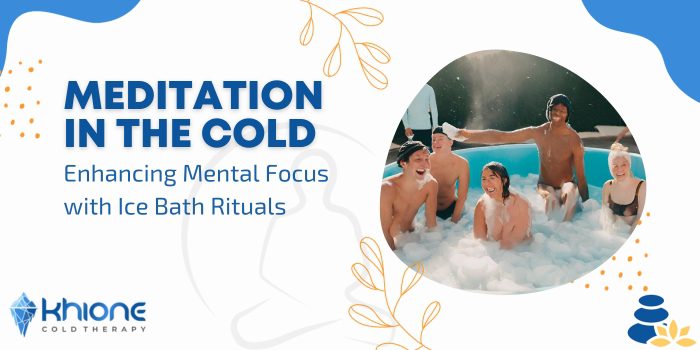

The blend of meditation and cold immersion may seem counterintuitive at first. While meditation often brings forth images of warm, comfortable environments, cold exposure paints a picture of discomfort and challenge. Yet, when the serene practice of meditation meets the exhilarating experience of cold immersion, the result is a transformative mental journey. Let’s delve into the synergy of these two practices and how they can deepen our mindfulness, resilience, and focus.
The Essence of Meditation
Meditation, at its core, is a practice of anchoring the mind, whether it’s to a breath, a mantra, or simply the present moment. By training our minds to remain centred despite external or internal distractions, we cultivate a state of peace, clarity, and heightened awareness.
Cold Immersion: The Ultimate Mindfulness Test
Enter cold immersion, a true test of mindfulness. When our body confronts the shock of icy water, the immediate instinct is to flee or fight. However, staying present in this discomfort forces us to transcend our primal reactions and ground ourselves in the present.
The Symbiotic Relationship
- Heightened Presence: The sheer intensity of cold immersion ensures that you’re wholly present. The mind doesn’t wander; it’s entirely in the now, amplifying the essence of meditation.
- Deepened Breathing: As anyone familiar with the Wim Hof method knows, cold exposure can stimulate profound, rhythmic breathing. This natural response aligns seamlessly with meditation practices that emphasize breath awareness.
- Mental Resilience: Continuously confronting and accepting the discomfort of cold cultivates a mental strength that is transferable to other challenges in life.
- Sensory Awareness: The cold amplifies bodily sensations, making us acutely aware of our physical presence, aiding in body scan meditation techniques.
Incorporating Ice Bath Rituals in Meditation
Utilizing ice bath chilling machines can significantly enhance this combined experience:
- Consistency is Key: The machine ensures a consistent temperature, allowing you to focus solely on your meditative practice without the distraction of fluctuating cold levels.
- Safety First: Being able to control the duration and temperature means you can safely push your boundaries without risk.
- Setting the Stage: Pair your ice bath ritual with calming music, essential oils, or guided meditations to enrich the experience.
Meditation Post-Cold Immersion
For those not ready to meditate during the cold immersion, meditating immediately after provides its unique set of benefits. The post-immersion rush of endorphins, combined with the body’s natural relaxation response, can pave the way for an incredibly profound meditative session.
Conclusion
While both meditation and cold immersion are powerful on their own, their combination can lead to a synergistic enhancement of mental clarity, focus, and resilience. It’s a journey of diving deep, both literally and metaphorically, into the realms of the mind and body. If you’re seeking a heightened meditative experience, consider incorporating the chill – it might just be the breakthrough you need.


